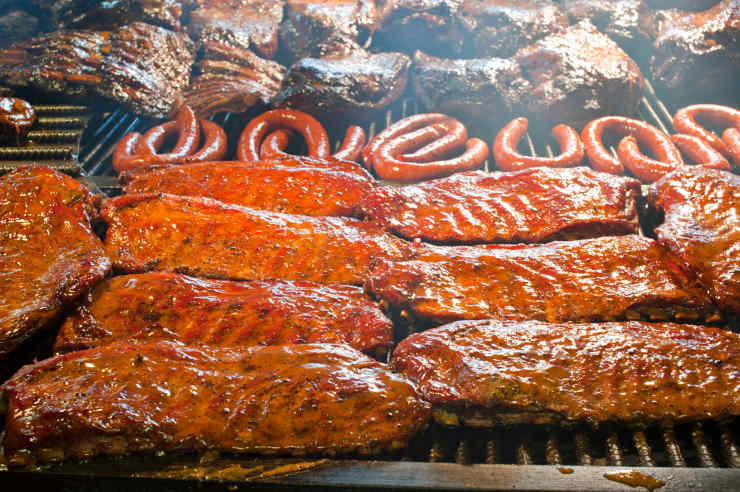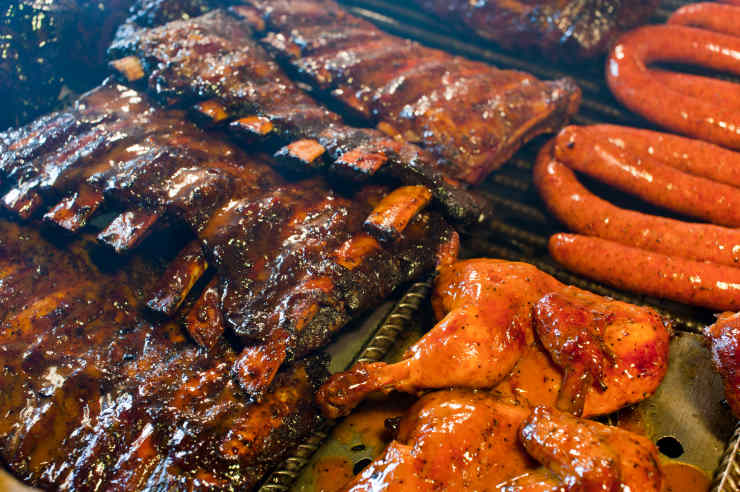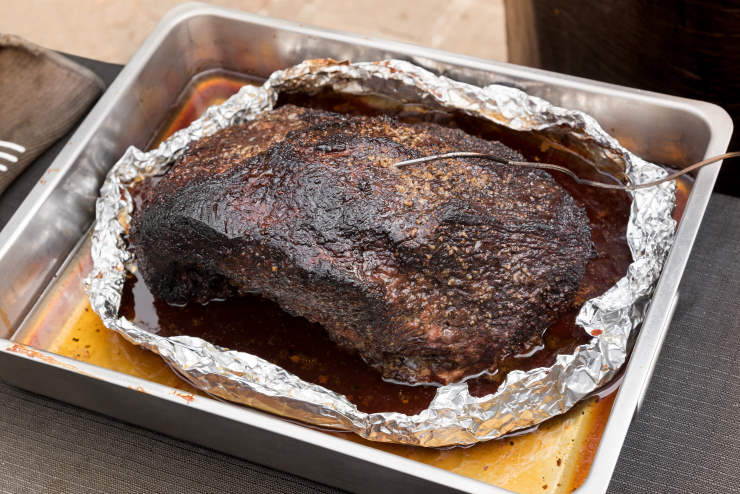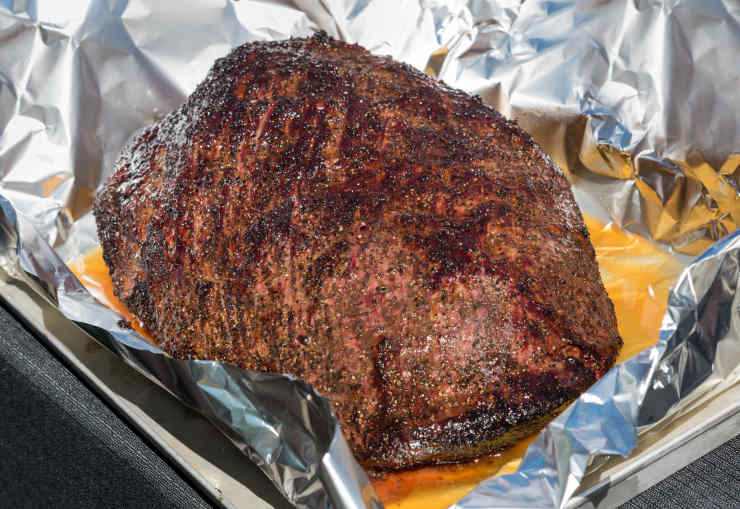How to Cook Brisket in the Oven
First, you should know the basics of cooking. At first, cooking might look extremely complicated. However, getting used to it and knowing the recipe will become easy. Cooking for family, for yourself, or just for fun will become your hobby if you keep cooking. You will learn how to cook brisket in the oven in this article.
Also, we will talk about what brisket is, how to prepare it, why you should bake it slowly, how long it takes to cook it, whether you should cook it in the liquid or above the liquid, and finally, what to serve brisket with.
Brisket: What Is It?
There are two briskets on one whole cow, brisket can be found above the front shank and below the chuck. A full brisket is one whole cut of beef. Confusion results when you stand in front of the meat case and see three variously shaped slabs of meat with the word “beef brisket” inscribed. Beef brisket is made from the fusion of two different pieces of flesh.
The brisket is divided and then trimmed by the butcher so that you can select between the fattier, marbled piece known as the brisket point or second cut and the leaner, more tender area known as the flat brisket or first cut. The flat brisket is frequently used to make corned beef and sporadically in pho during Jewish holidays. The point brisket is the typical cut used for barbecue. No matter the brisket cut you choose, it is a tough cut of beef that needs to be cooked slowly and low. Think of a slow cooker, an oven, or indirect heat on a grill.
How to Prepare Brisket

We’re talking about a braise since brisket is a cut of meat that needs to be cooked for a long time at a low temperature. These general pointers and tricks are provided. A brisket flat or brisket point cooked on its own takes 3 to 3 1/2 hours to cook. A full brisket might require another hour. Check the brisket 30 minutes before the cooking time is up; it should be juicy and fork tender.
It will get dry if it is overcooked. Your brisket will taste best if you cook it the day before you plan to slice and serve it. Then cover it and chill it overnight in the sauce still in the pot. Removing and discarding all the solidified fat from the top the next day will be very simple even slices, cutting the brisket cold is your best bet.
Why Should Beef Brisket Be Baked Slowly?
Cooking a challenging piece of meat over a long period at a low heat is known as low and slow. The final brisket will be extremely tender thanks to this technique. Low heat usually ranges from 250 to 325°F. Because of the connective structure, brisket can be challenging meat to prepare.
To transform the connective tissue into gelatin, it must be boiled slowly and at a low temperature. This makes it pliable. Choose a brisket with lots of meat marbling from the fat. A beef brisket benefits from fat because it keeps the meat soft when baking.
How Long Does Brisket Cook For?

Roast brisket at 250°F for 60 minutes per pound. A 3-pound brisket would therefore require about 3 hours to cook. However, there are additional factors that can have an impact on this estimation. Therefore, verify that the brisket’s internal temperature is 195°F before removing it from the oven.
Brisket in the Oven: Cooking Instructions
Let’s know how to cook brisket in the oven:
- The thickest section of the brisket should be probed with an oven-safe meat thermometer before the roasting pan is completely covered with foil. Covering the roasting pan with foil ensures that the brisket is cooked with smoke-flavored steam all around it.
- Run the wire out the side of the pan if your oven has a built-in meat thermometer. Use a normal meat thermometer and push it through the foil into the brisket to see the reading.
- Slow Roast in the oven until it reaches 175°F within. When the internal temperature reaches 195–200°F, take off the foil and continue roasting. This process could take 5 to 6 hours, depending on your oven and where you inserted the meat thermometer.
- Avoid the temptation to increase the temperature to hasten the cooking process because this will result in very tough brisket. Slow oven roasting enables the fats to break down, tenderizing the beef so that it ultimately has a stretched, moist texture gradually.
- To ensure that the fluids are distributed evenly, remove the brisket from the oven and let it rest for at least 30 minutes before serving. It would be preferable if you could wait a little longer. To help it maintain heat, cover it loosely with foil.
Now you know how to cook brisket in the oven, serve the brisket warm after slicing it into extremely thin slices against the grain. Enjoy with sauce or with buns!
Is Beef Brisket Prepared Above or in Liquid?

This recipe for oven-roasted beef brisket aims to cook a brisket that holds together in soft slices and maintains its structure, which is best accomplished by keeping it out of the liquid. Use this recipe for cooking the brisket in liquid if you want brisket that shreds. The sauce may pick up some dry rubs, but it will still be wonderful.
What to Serve With Baked Brisket
A traditional side dish for cookouts, beef brisket, goes nicely with a variety of sides. Try old favorites like coleslaw, baked potatoes, or herbed rice to go with this meaty meal. Adding baked beans and corn to the cob would also enhance the flavor.
Conclusion

Now you know how to cook brisket in the oven. When you know the recipe, it is easier to cook brisket. Now you can easily cook brisket for your family, yourself, and anybody. You know almost everything about brisket and some side dish stuff that goes with brisket. Happy cooking and have fun while cooking!

